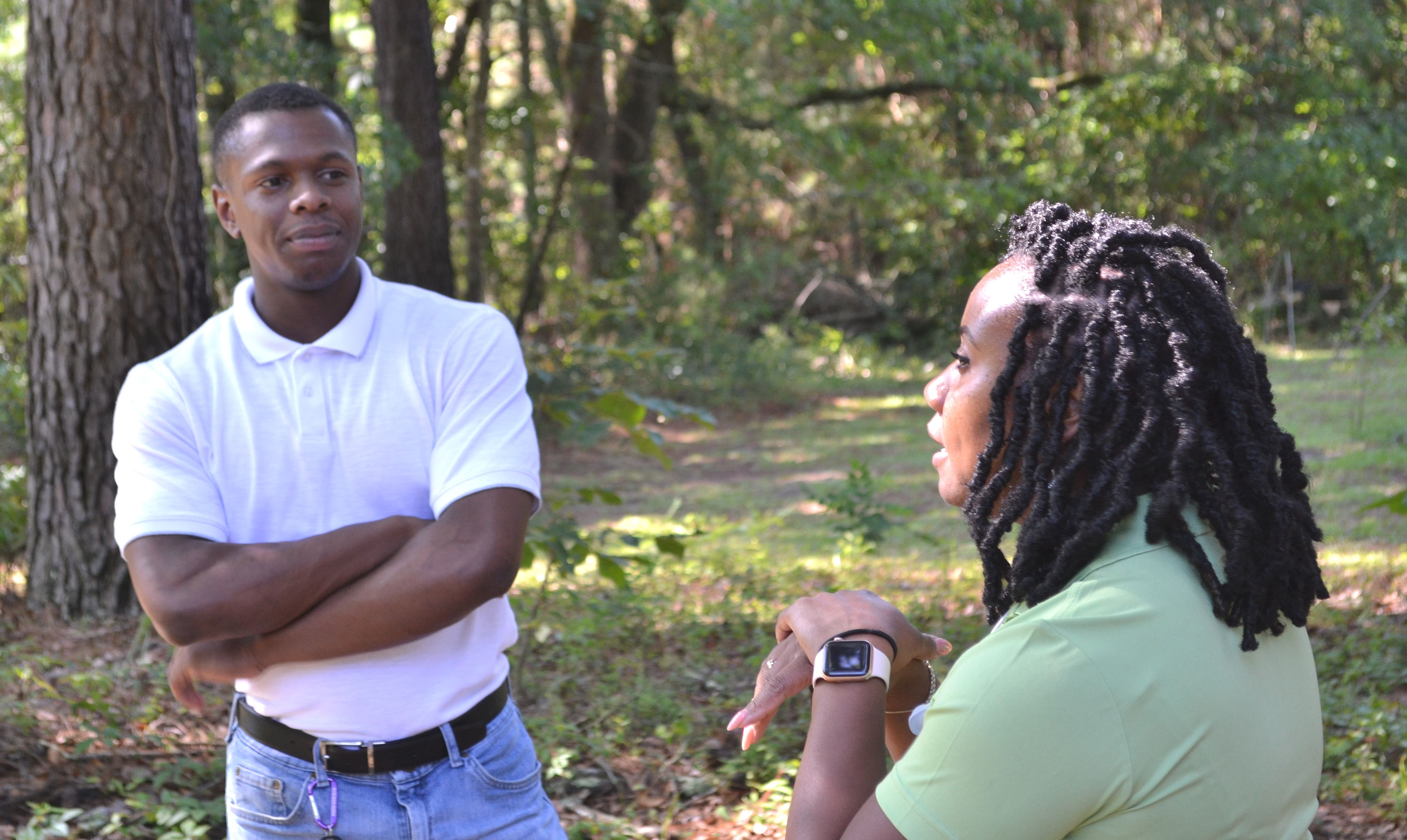The Future of SAF: Kenneth Dunn
August 19, 2020
This month, The Forestry Source features Kenneth Dunn. We met Dunn in the February 2020 issue of The Forestry Source’s article “NC State and Tuskegee University Partner to Increase Diversity in Forestry” when he was a master’s student at North Carolina State University; Dunn also earned his undergraduate degree in environmental science from NC State University. He has since graduated with a master’s in forestry and is a forester with the Center for Heirs’ Property in Charleston, South Carolina. He joined SAF in 2020 and is a member of the ApSAF chapter. At the 2019 National Convention, Dunn presented his silvopasture research in a presentation titled Silvopasture in the Southern Coastal Plain: Biometrics, Economics, and Prospects and placed third in student presentation contest sponsored by the Forest Science Technology Board.
In his own words, Dunn shares how literally following a path led him to forestry and how he is fulfilling his passion of working with landowners.
Following a Trail to Forestry and Silvopasture
By Kenneth Dunn

A graduate from North Carolina State University with a master’s in forestry, Kenneth Dunn (left) is a forester with the Center for
Heirs’ Property (heirsproperty.org). His work frequently takes him into the field to meet with landowners and provide forest
management advice. Photograph courtesy of Kenneth Dunn.
The Sea of Gold and the beginning of forestry
My interest in forestry initially began when I was about 12 years old. My parents took me for a visit to see my relatives in a small town called Pittsboro in North Carolina. While the adults were reminiscing about “the good ol’ days,” I decided to leave the house and explore.
I snuck out the back door and proceeded through the lush green backyard. As I walked, I noticed a forest in the distance. It was captivating … strange … mysterious. I couldn’t resist it … I had to explore it … I hastily ran across backyard and entered into a majestic maze of timber. Moving branches and shrubs out of the way, I trekked through what seemed like miles of pristine wilderness. The sense of peace, serenity, and equanimity still moves me to this day.
As I continued, I discovered what seemed to be an abandoned trail. It was rugged, battered, and dusty. It looked like it hadn’t been used in decades … I had to follow it … Marching my way down its many twists and turns, I looked up and noticed something yellow in the distance. It was big … Really big … It had this pristine sparkle that illuminated the forest understory. I had to figure out what it was. I hastily galloped down the trail to take a closer look.
Scuffling through branches and shrubs, I rushed to discover what this bright visage was. Tripping and stumbling over roots, rocks, and small plants, I came to the end of the trail, and the massive yellow attraction slowly revealed itself. It was a field. A field of golden honey–colored wheat that sparkled in the setting sun. It seemed to stretch forever, blanketing the landscape in its amber glow. I stood in amazement at the sheer majesty of the site I was witnessing. As the sun began to set, a gentle breeze coerced the field, gently blowing the tops of grain side to side. As I gazed at the field, it appeared as if I was standing in a sea of gold. I will never forget that experience.
Silvopasture: Should we do it? I say….
Looking at alternative uses of land is one of the upcoming challenges in the forestry industry. With timber being a long-term investment, many landowners are seeking alternative methods to manage timber and receive other periodic streams of income. One alternative is known as silvopasture. Silvopasture is the combination of forestry, livestock, and pasture management. The research I’ve conducted primarily looks at the financial tradeoffs of silvopasture systems and how they compare to monoculture systems. In other words, financially speaking, when is forestry the best option? When is agriculture the best option? And when is silvopasture the best option? An exciting question, is it not?
Forestry and heir’s property
Heir’s property is a legal term that denotes when a landowner dies without a will and their estate isn’t probated within the first 10 years after death; their property then belongs to the surviving heirs. As a forester with the Center for Heirs’ Property, I present these landowners with potential management options, in addition to forestry practices that may be suitable on their property. Education is also a big part of my job. Most minority landowners are unaware of what forestry is and how timber production can be a financial asset. We have a legal team that works with our landowners to help them clear any litigation that may be affecting the property. I primarily deal with minority landowners, but at the Center we try to help everyone we can. Our goal is to reverse the trends of high grading and land loss among underserved communities and give families a foundation to establish generational wealth. I believe the Center’s mission is a noble one, and I’m thrilled to be a part of this organization and the movement being created.
Kenneth Dunn can be reached at [email protected]. Follow his work with the Center for Heirs’ Property on Twitter and Facebook.